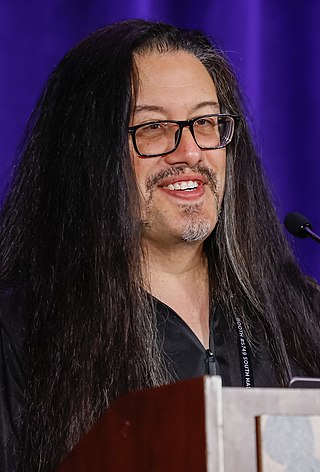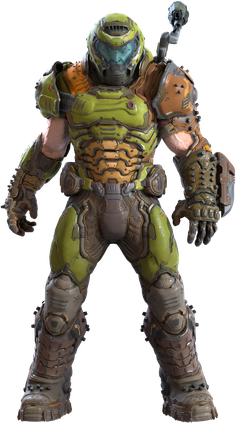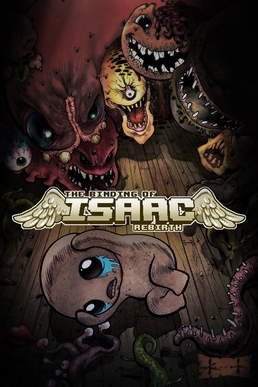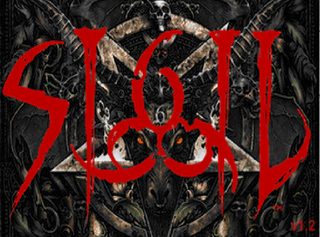
Doom is a first-person shooter game developed and published by id Software. Released on December 10, 1993, for DOS, it is the first installment in the Doom franchise. The player assumes the role of a space marine, later unofficially referred to as Doomguy, fighting through hordes of undead humans and invading demons. The game begins on the moons of Mars and finishes in hell, with the player traversing each level to find its exit or defeat its final boss. It is an early example of 3D graphics in video games, and has enemies and objects as 2D images, a technique sometimes referred to as 2.5D graphics.

Carmageddon is a vehicular combat video game released for personal computers in 1997. It was produced by Stainless Games and published by Interplay Productions and Sales Curve Interactive. It was ported to other platforms, and spawned a series.

Alfonso John Romero is an American director, designer, programmer and developer in the video game industry. He is a co-founder of id Software and designed their early games, including Wolfenstein 3D (1992), Doom (1993), Doom II (1994), Hexen (1995) and Quake (1996). His designs and development tools, along with programming techniques developed by id Software's lead programmer, John Carmack, popularized the first-person shooter (FPS) genre. Romero is also credited with coining the multiplayer term "deathmatch".
Video game modding is the process of alteration by players or fans of one or more aspects of a video game, such as how it looks or behaves, and is a sub-discipline of general modding. Mods may range from small changes and tweaks to complete overhauls, and can extend the replay value and interest of the game.
Doom WAD is the default format of package files for the video game Doom and its sequel Doom II: Hell on Earth, that contain sprites, levels, and game data. WAD stands for Where's All the Data? Immediately after its release in 1993, Doom attracted a sizeable following of players who created their own mods for WAD files—packages containing new levels or graphics—and played a vital part in spawning the mod-making culture which is now commonplace for first-person shooter games. Thousands of WADs have been created for Doom, ranging from single custom levels to full original games; most of these can be freely downloaded over the Internet. Several WADs have also been released commercially, and for some people the WAD-making hobby became a gateway to a professional career as a level designer.

Doomguy is a fictional character and the protagonist of the Doom video game franchise of first-person shooters created by id Software. He was created by American video game designer John Romero. He was introduced as the player character in the original 1993 video game Doom. Within the Doom series, Doomguy is a demon hunter space marine dressed in green combat armor who rarely speaks onscreen, and his personality and backstory were intentionally vague to reinforce his role as a player avatar. In Doom Eternal, he is voiced by American voice actor Matthew Waterson, while Jason Kelley voices the character in that game's downloadable content The Ancient Gods: Part Two. He has appeared in several other games developed by id Software, including Quake Champions and Quake III Arena.

Mod DB is a website that focuses on general video game modding. It was founded in 2002 by Scott "INtense!" Reismanis. As of September 2015, the Mod DB site has received over 604 million views, has more than 12,500 modifications registered, and has hosted more than 108 million downloads. A spin-off website, Indie DB, was launched in 2010 and focuses on indie games and news.
Christian video games are a video game genre and a form of Christian media that focus on the narrative and themes of Christian morals and Christianity. The term can also refer to Christian symbolism, mythology, media franchises, and Christian media organizations within video game culture and industry.
Christian atheism is a form of atheism that adopts the teachings, narratives, symbols, practices, or communities associated with Christianity without accepting the literal existence of God.

Cyriak Harris, known mononymously as Cyriak, his B3ta username Mutated Monty, and Mouldy in the Doom community, is an English freelance animator, artist, composer, and author from Brighton. He is known for his surreal and bizarre short web animations with the frequent use of the Droste effect. Cyriak is his real birth name.

A capirote is a Catholic pointed hat of conical form that is used in Spain and Hispanic countries by members of a confraternity of penitents. It is part of the uniform of such brotherhoods including the Nazarenos and Fariseos during Easter observances and reenactments in some areas during Holy Week in Spain and its former colonies, though similar hoods are common in other Christian countries such as Italy. Capirote are worn by penitents so that attention is not drawn towards themselves as they repent, but instead to God.

The Cyberdemon is a fictional character in the Doom video game franchise by id Software, where it was introduced in the first-person shooter game Doom in 1993. It has appeared in several other id games, including all main-line Doom sequels, Doom RPG, and Wolfenstein RPG as the Harbinger of Doom, along with other related media. The Cyberdemon became one of the most iconic characters of the Doom series along with its protagonist, the "Doomguy", and is often described as one of the most memorable bosses in video gaming history.
Iikka Keränen, a native of Finland, lives in Seattle, Washington with his dog. He is a level designer at Valve. He also co-founded Digital Eel, an independent video game development group, in 2001. His range of professional skills include illustration, 2D game art, 3D modeling, programming and game design.

The Binding of Isaac: Rebirth is a roguelike and indie game designed by Edmund McMillen and developed and published by Nicalis. Rebirth was released for Linux, Microsoft Windows, OS X, PlayStation 4 and PlayStation Vita in November 2014, for Xbox One, New Nintendo 3DS and Wii U in July 2015, for iOS in January 2017 and for Nintendo Switch in March 2017. The PlayStation 5 and Xbox Series X/S versions were released in November 2021.
Brutal Doom is a game mod for the 1993 first-person shooter Doom created by the Brazilian developer Marcos "Sergeant Mark IV" Abenante. It adds numerous gameplay elements and graphical effects. The mod has been in development since 2010, and continues to release new updates.

The Cacowards are an annual online awards ceremony which honors the year's most prominent "Doom WADs", video game modifications of the 1993 first-person shooter Doom. Such modifications may be single levels, level packs, or "total conversions" featuring gameplay that significantly diverges from traditional Doom. Although generally focusing on classic Doom games, modifications for other Doom-engine based games such as Heretic, Hexen and Strife have also been featured. Since 2004, the Cacowards have been hosted at doomworld.com, a Doom fansite.

Cultist Simulator is a card-based simulation video game developed by indie studio Weather Factory and published by Humble Bundle. It was released for Microsoft Windows, macOS and Linux computer systems in May 2018, with mobile versions developed by Playdigious and released in April 2019. A port for Nintendo Switch was released in February 2021.

A social deduction game is a game in which players attempt to uncover each other's hidden role or team allegiance. Commonly, these games are played with teams, with one team being considered "good" and another being "bad". During gameplay, players can use logic and deductive reasoning to try to deduce one another's roles, while other players can bluff to keep players from suspecting them.

Sigil is the unofficial fifth episode of the 1993 video game Doom. Published by Romero Games on May 31, 2019, the Megawad was created by an original co-creator of Doom, John Romero, independently of the main game's then-current owner, Bethesda Softworks. It has nine missions, each with a deathmatch version, and a new soundtrack created by James Paddock and Buckethead. While initially released independently, Bethesda later released the episode as a patch for the console ports of Doom.















